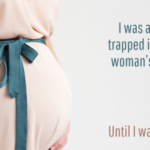We were so close to what I think would have been our first ruling on the safe harbor of using the Model Validation Notice, but a District Court judge in Utah ruled a plaintiff lacked standing to pursue his Fair Debt Collection Practices Act lawsuit because the defendant purchased the plaintiff’s lawsuit during a sale to satisfy a judgment that was obtained in an underlying collection lawsuit.
A copy of the ruling in the case of Almeida v. N.A.R. can be accessed by clicking here.
The plaintiff received a Model Validation Notice from the defendant in regard to an unpaid rent debt. The defendant subsequently filed a collection lawsuit seeking to recover the unpaid amount. The plaintiff did not respond to the lawsuit, but instead filed a lawsuit of his own, accusing the defendant of violating the FDCPA because the Model Validation Notice did not indicate whether interest on the underlying debt was still accruing. The defendant filed a motion to dismiss, arguing that its use of the Model Validation Notice entitled it to a safe harbor from such claims.
After obtaining a default judgment, the defendant sought a writ of execution to collect on the judgment. A Constable’s sale was held and the defendant purchased the plaintiff’s lawsuit against itself and then filed a new motion to dismiss for lack of standing.
Ultimately, Judge Dale A. Kimball of the District Court for the District of Utah granted the motion to dismiss on the grounds the plaintiff now lacked standing to sue, disagreeing with the plaintiff’s argument that he should set aside the Constable’s sale and let this case proceed to its conclusion. But because the plaintiff chose not to do anything in the underlying collection lawsuit, and because the state court and federal courts are separate, Judge Kimball said the plaintiff had no legal leg to stand on.









